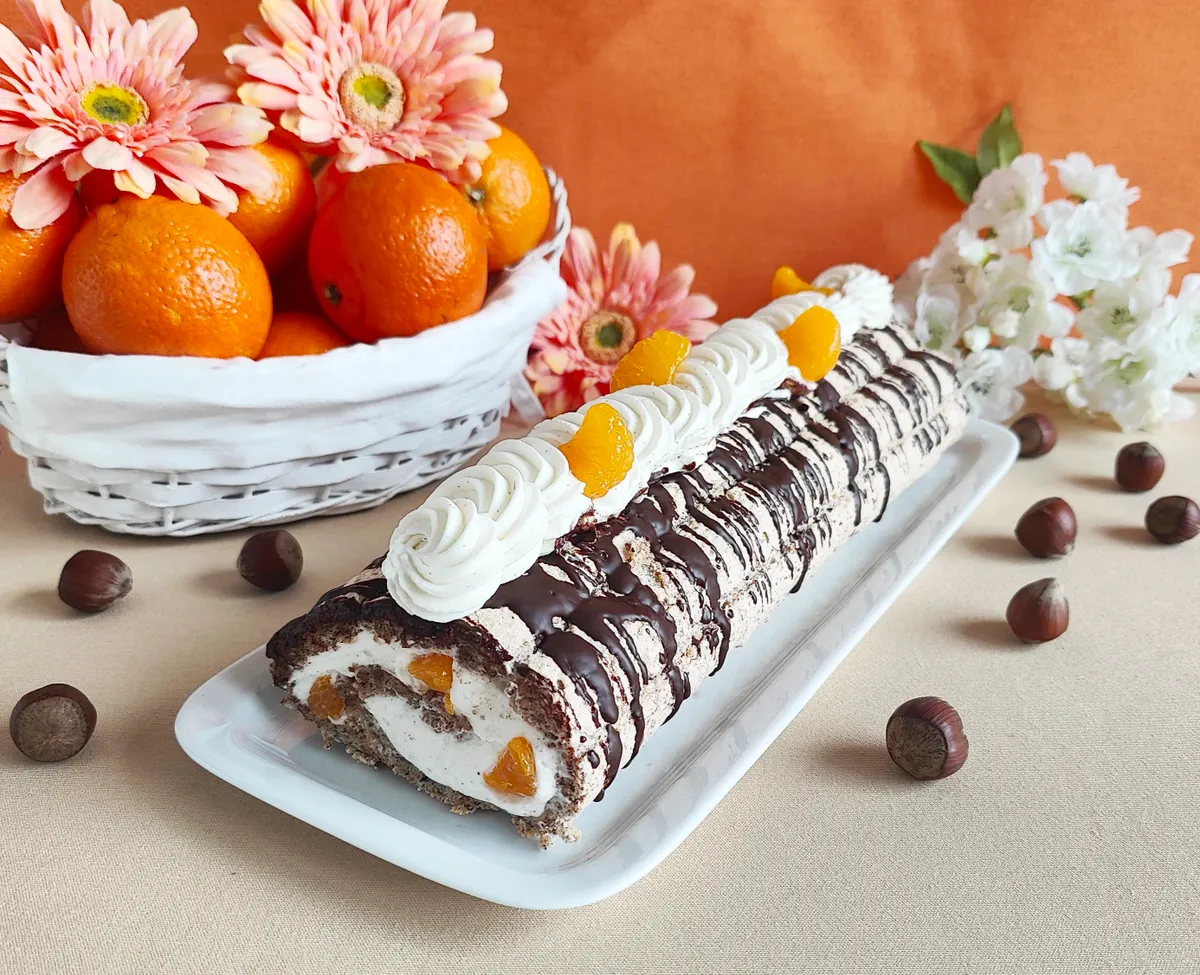
The history of Budapest Roll
The *Budapestlängd*, more commonly known outside Sweden as the Budapest Roll, is a modern Swedish dessert despite its Hungarian name. It is a roulade made from hazelnut meringue, filled with whipped cream and tinned mandarins, then rolled and presented either dusted with icing sugar or decorated with chocolate. Its light texture, balance of sweet and tangy flavours, and delicate appearance have made it a staple of Swedish *fika*, the traditional coffee break.
The creator of this cake was Swedish pastry chef Ingvar Strid, who first made it in the 1950s. Strid ran a bakery in Vetlanda, a small town in the province of Småland, in southern Sweden. He was inspired by traditional Swiss rolls, but reinvented them with a hazelnut meringue base instead of sponge, aiming for a flourless, airier and quicker-to-make alternative. The use of preserved fruit also gave it a practical, year-round appeal.
The name “Budapest” has no direct connection with Hungarian cuisine or any traditional Central European recipe. According to various Swedish sources, Strid chose the name simply for its exotic and elegant ring, which evoked a sense of sophistication. In the 1950s and 60s, it was common in Sweden to name cakes and desserts after foreign cities as a way to lend them a touch of distinction, even if there was no real cultural link.
This dessert quickly became popular throughout Sweden, especially in cafés and bakeries offering the typical assortment of pastries to accompany coffee. Its low production cost, ease of assembly and attractive presentation made it a favourite among bakers and café owners. Today, it’s commonly found in supermarkets, bakery displays and family celebrations, sold whole or sliced into rectangular portions.
Over time, several variations of the Budapest Roll have emerged, although the version with whipped cream and mandarin segments remains the most popular. Other fillings include raspberries, strawberries or even blueberries, and some bakers decorate it with chocolate drizzle or toasted almonds. Despite these variations, the core concept remains: a nut-based meringue rolled with a fresh, creamy filling.
Nowadays, the *Budapestlängd* is considered part of Sweden’s modern pastry repertoire, alongside other classics like *prinsesstårta* and *semlor*. Its combination of simplicity, flavour and aesthetic appeal has made it popular even beyond Sweden, especially in neighbouring countries like Norway and Finland. Though it may not have a long historical tradition, its impact on contemporary Swedish patisserie is undeniable.

 albertoimizcoz
albertoimizcoz

